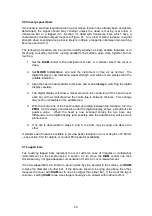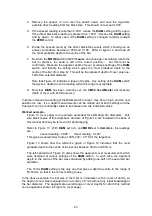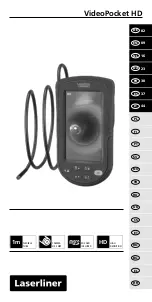
29
5.13 Data Logging.
The
CM52 CoverMaster
is supplied fitted with an output suitable for feeding into any
commercially-available data-logger.
This analogue output socket is mounted on the left-hand side of the case (of the two
sockets, it is the one further from the front panel), and is a 3.5mm mono jack with the
inner (tip) being signal positive and the outer (sleeve) negative ground.
The logger output increases with signal – that is, bar proximity – but is processed to be
directly related to indicated cover by an inverse law, meaning that the
product
of the
cover and the signal (in milliVolts) is a constant. To convert the recorded signal back to
cover, use (cover in mm) = (constant) ÷ (signal in mV).
Please note that this conversion constant is only applicable to the standard head; if
readings from a midget head are to be logged, please ask
Protovale
for a copy of
Application Note #34, “Data-logging from a Midget Head”.
The value of this constant is factory-set to a nominal value 32.000 volt-millimetres. The
output signal therefore ranges between about 300mV and 1.27V, and is suitable for any
(analogue input) data logger, including those used for half-cell potential surveys.
The CM52 output is continuously present; this means that either continuous traverses or
discrete readings can be logged. If continuous scans are recorded, the (large) amount of
data will need to be post-processed to pick out the peaks (representing each rebar) and
convert just those peaks to cover values. It is more usual however to use the audio
sound from the CM52 to locate each bar and correctly position the head over it, then
record discrete readings for each such bar.
Some typical output values are shown below :
Cover in mm
Output in mV
(117
274)
100
320
90
356
80
400
70
457
60
533
50
640
40
800
30
1070
26
1230
(25
1280)
(Note that the first and last entries are for guidance only).
5.14 Temperature effects.
Due to Protovale‘s unique bar detection method, the search head is totally unaffected by
temperature.
The electronics have built-in temperature compensation, which allows accurate operation
over most combinations of temperature and cover.
However, at low temperatures (<5°C, ie near freezing-point) the electronics loses
accuracy only when processing very strong signals. In practice, this results in the unit
indicating too high by about two millimetres for covers of 25 to 32mm. At all other
(deeper) covers, there is no error at any temperature.





































